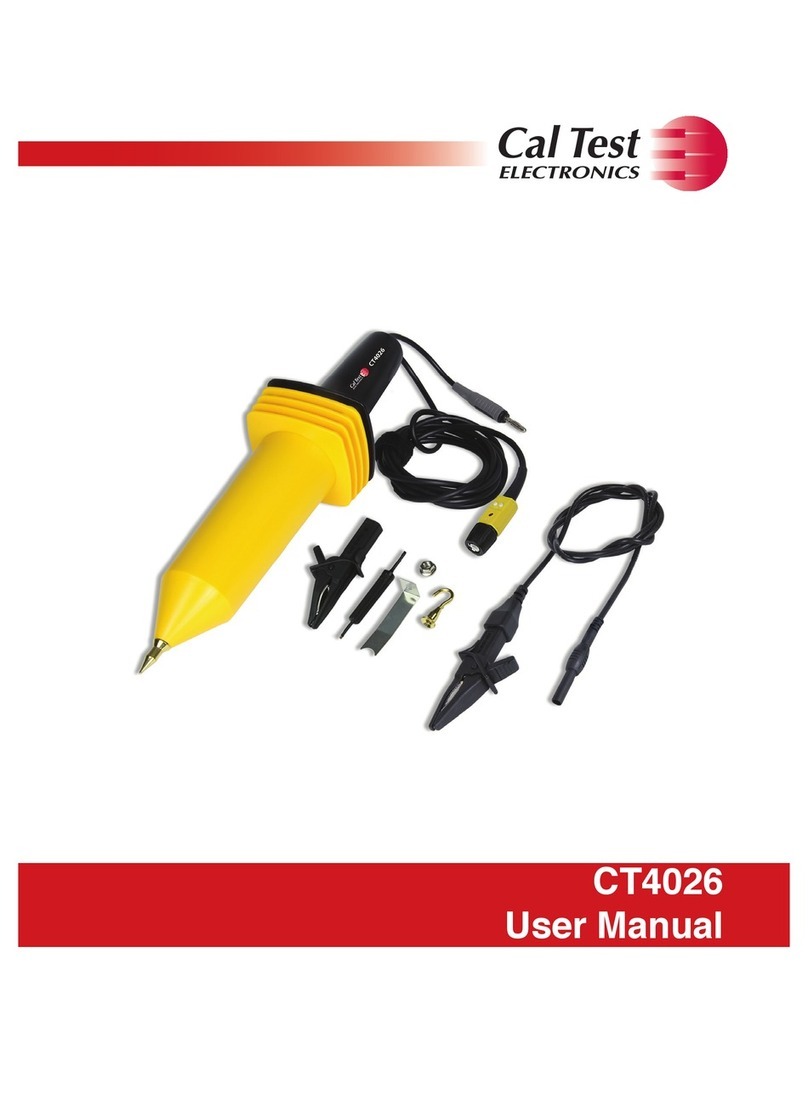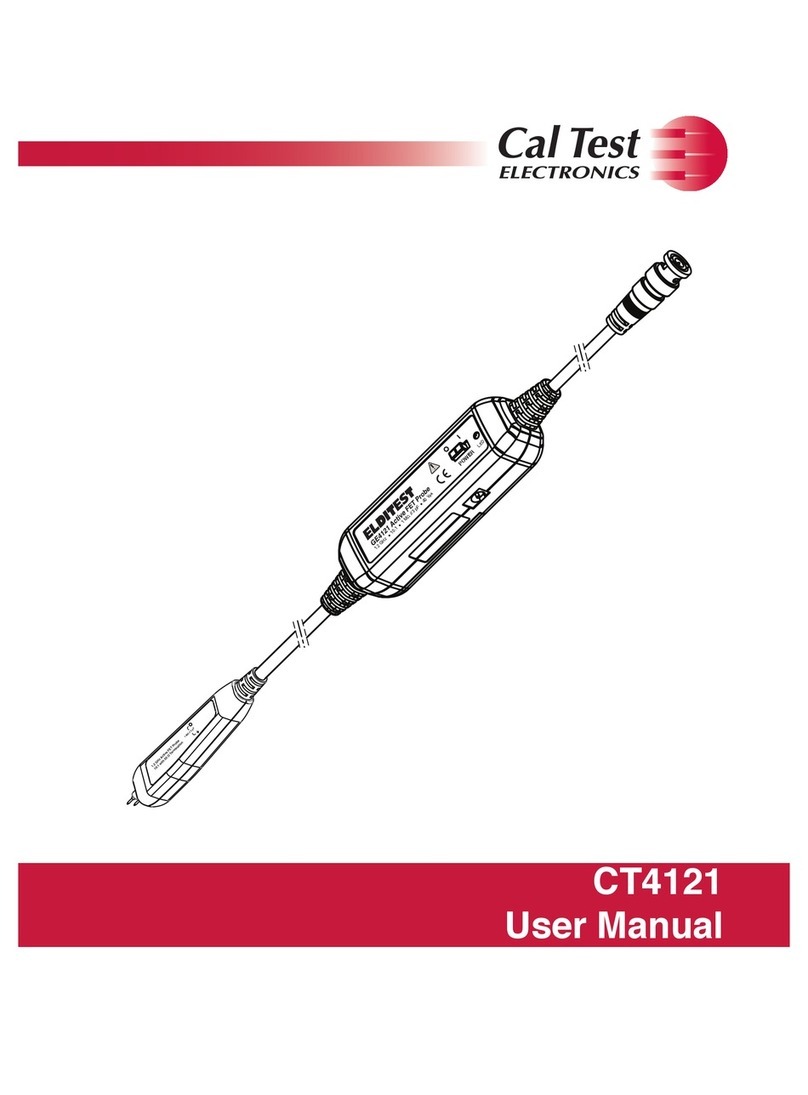450866-001 Rev. B caltestelectronics.com 1
Safety Summary
To avoid personal injury and/or product damage, review and comply with
the following safety precautions. These precautions apply to both operating
and maintenance personnel and must be followed during all phases of
operation, service, and repair of this probe.
A WARNING statement calls attention to an operating procedure,
practice, or condition, which, if not followed correctly, could result in injury
or death to personnel.
A CAUTION statement calls attention to an operating procedure, practice,
or condition, which, if not followed correctly, could result in damage to or
destruction of parts or the entire product.
Do Not Work Alone
Do not work alone when working with high voltages.
Inspect the Probe
Inspect the probe and accessories for cracks and frayed or broken leads
before each use. If defects or damages are noted, DO NOT USE the
probe.
Dry Conditions
Hands, shoes, oor, and work bench must be dry. Avoid making
measurements under humidity, dampness, or other environmental
conditions that might affect safety.
Do Not Remove the Probe’s Casing
Removal of the probe’s casing may expose you to electric shock. If
necessary, disconnect the inputs and outputs of the probe before opening
the case.
Hazardous Contact
To avoid injury, remove jewelry such as rings, watches, and other metallic
objects. Do not touch exposed connections and components when power
is present.
Unexpected Charges
Hazardous voltages may be present in unexpected locations in circuitry
being tested when a fault condition in the circuit exists.





























